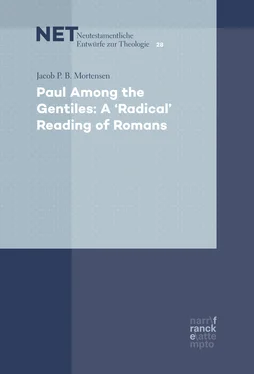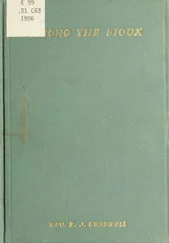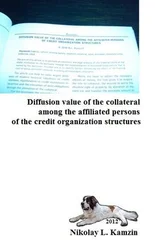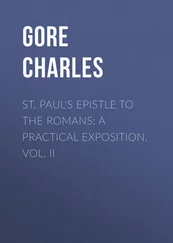Before moving forward, I must explicitly state that I do not begin this chapter from the position of the radical perspective, which identifies Paul’s addressees as Gentiles. My logic is reverse: I first analyse the literary, intertextual, and historical situation of Romans, without any prejudice or bias. My aim is primarily historical and philological. Through my analysis of the introductory questions, I conclude that Paul addressed his letter exclusively to Gentiles. With this conclusion firmly stated, I find inspiration and further support in the work of the radical perspective concerning interpretations of specific passages of the letter. But my point of departure is purely historical and philological.
The integrity of the letter
In the history of interpretations of Romans, some scholars have concluded that the current form of the letter is a composite of two, three, or more letters.1 If that was actually the case, it would be futile to search for a single occasion and purpose behind the letter, because the situation behind one strand might be entirely dissimilar from the situation behind another. Consequently, before we can determine the situation(s), occasion(s), and purpose(s) underlying Romans, we need to consider the partition theories.
Walter Schmithals argued, in a 1975 monograph and again in his 1988 commentary, that Romans is a composite of two originally separate letters to Rome, and of other fragments of Pauline and non-Pauline origin. Paul wrote Letter A (Rom 1:1–4:25; 5:12–11:36; 15:8–13) in Ephesus earlier in his ministry, prior to the problems in Corinth, and later he wrote Letter B (Rom 12:1–21; 13:8–10; 14:1–15:4a, 5f., 7, 14–32; 16:21–23; 15:33) in Cenchreae, since Rom 16:1–20 commends Phoebe, a deacon of the church at Cenchreae. Schmithals argues from apparent contradictions in the framework of the letter. In 15:20, Paul writes that he does not wish to build on someone else’s foundations, but in 1:13 he envisions producing some fruit in Rome. In 15:24, he plans to visit Rome in order to gain support for his trip to Spain, but in chapter 1 he desires to visit the recipients for their own sake. In 1:10 and 13, Paul claims that his visit to Rome was hindered, but in 15:22–25 the hindrance seems to be in the past, and Paul is sure that he will succeed in visiting Rome. These conflicting statements led Schmithals to conclude that Romans was composed (primarily) of two separate letters.
In a 1979 article (reprinted in The Romans Debate ), Alexander J.M. Wedderburn responded to Schmithals’ position. Wedderburn noted that the hindrance in 1:13 had already been removed (‘up until now’) in chapter 1, so the travel plans in chapter 15 were clear throughout. Concerning Paul’s statement about not wanting to build on someone else’s foundations, positing two separate letters would not resolve this contradiction. Wedderburn also noted the different contexts of 1:15 and 15:20: In chapter 1, Paul addresses believers, whereas in chapter 15 he speaks of preliminary missionary work. In chapter 1, Paul manoeuvres a situation with a group he has not yet visited, whereas the general principle of 15:20 does not necessarily rule out Paul’s preaching among other believers, but merely mentions his reluctance to do so. Finally, the extant textual evidence includes no signs that support the hypothesis of separate strands underlying Romans. Therefore, Richard Hays stated his aversion to such ‘wildly speculative hypotheses’, and claimed that such ‘theories belong in a museum of exegetical curiosities rather than a serious discussion of the theological coherence of Romans’.2 Partition theories suffer from the complete lack of evidence in the manuscript tradition, and cannot satisfactorily explain how and why later redactors of Romans would weave together the fragments into its current form.
A 14-, 15-, or 16-chapter version of Romans
Whereas the manuscript tradition of Romans constitutes a serious weakness for the partition theories, it also raises a new set of questions, because Romans presents several textual problems. Do Rom 1:7 and 1:15 belong to the original letter, or are they products of later scribal editors? The manuscript tradition is undecided. Were chapters 15 and 16 original parts of the letter? One or both may be questioned, based on the extant textual evidence. Is the doxology (16:25–27) original, and does it belong at the end of the letter? In some manuscripts the doxology is placed at the end of chapter 14, in others at the end of chapter 15, and in yet others, at the end of chapter 16.1
Some manuscripts support a fourteen-chapter version of Romans by inserting the doxology after 14:23. In other manuscripts, the doxology follows both 14:23 and 16:24.2 Marcion’s prologue claims that Romans was written in Athens, even though Rom 15 to 16 suggests a Corinthian origin. This means that Marcion’s version must have been based on a version without chapters 15 to 16.3 Although forteen-chapter versions of Romans exist, this is probably not the original form, because it cannot account for the development of the old Latin manuscripts that end with chapter 15. And scholars commonly agree that 15:1–16:16 (maybe even 16:24) are Pauline in content and style. Also, Paul’s admonition to the ‘strong’ and the ‘weak’ does not end until 15:6 or 15:13. And no one has been able to convincingly argue why 15:1–6 (or 15:1–13) would have been subsequently added to a fourteen-chapter version of the letter. Consequently, no one has been able to explain why a later addition to the letter would have continued a discussion that belonged with the original situation.4
The most likely explanation is that an original, longer, letter was abbreviated to a fourteen-chapter version, even though the rationale behind such a revision is difficult to determine. Hypotheses include that the revisionists found the content offensive, that the fourteen-chapter version was used for liturgical purposes, or that Romans was shortened into a more general form to appeal to a broader audience. Harry Gamble noted that a few manuscripts omit ἐν Ῥώμῃ in 1:7, and τοῖς ἐν Ῥώμῃ in 1:15, and that these omissions coincide with the fourteen-chapter version attested to in the Western bilingual versions.5 Together, 1:7, 15, and chapters 15 to 16 specify the addressees. This suggests that Romans was deliberately shortened. With regard to the fourteen-chapter version, it may be stated that no one has been able to provide a satisfactory account of the origins of this version of Romans. Thus, the only relative certainty is that the fourteen-chapter version is not the original form.
In 1829, David Schulz argued that Paul wrote Rom 1–15 to the congregation in Rome, and then added chapter 16 for the church at Ephesus.6 In 1962, T.W. Manson advanced Schulz’s original hypothesis, specifically by arguing from the strongest textual evidence (p 46), which uniquely positions 16:26–27 after chapter 15.7 However, most scholars have not found Manson’s case compelling, mainly because the textual evidence overwhelmingly favours the inclusion of chapter 16. Even in p 46, 16:1–23 immediately follows the doxology.8 Only Miniscule 1506 presents chapter 15 without 16:1–23, but there is a blank half page between chapter 15 and 16:25–27, which suggests that the copyist knew of Rom 16. Additionally, the δέ in 16:1 presupposes a preceding text, and confirms that chapter 16 did not stand on its own. The simplest explanation is that Rom 16 naturally follows Rom 15, thus making it improbable that Rom 16 was a separate letter of commendation and greetings. After all, such a letter would be unparalleled in the Pauline corpus. A letter of recommendation for Phoebe is unnecessary, when Paul typically includes subforms of various genres in his letters.9
Читать дальше












